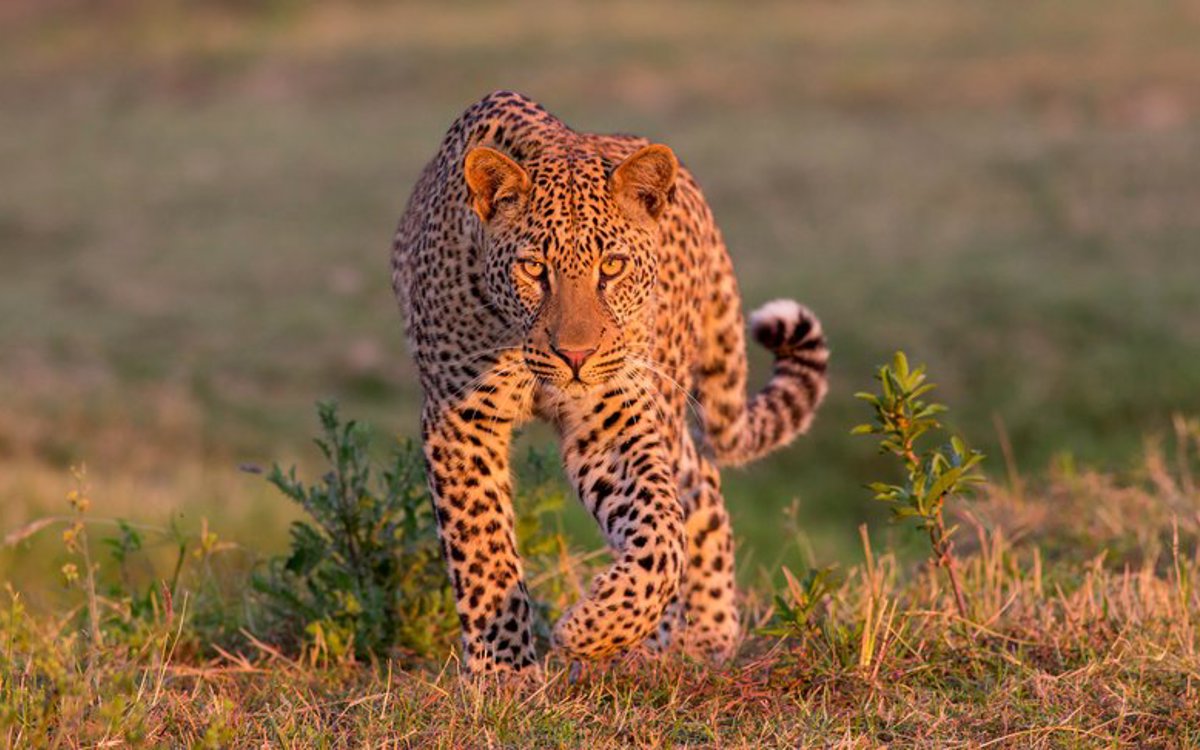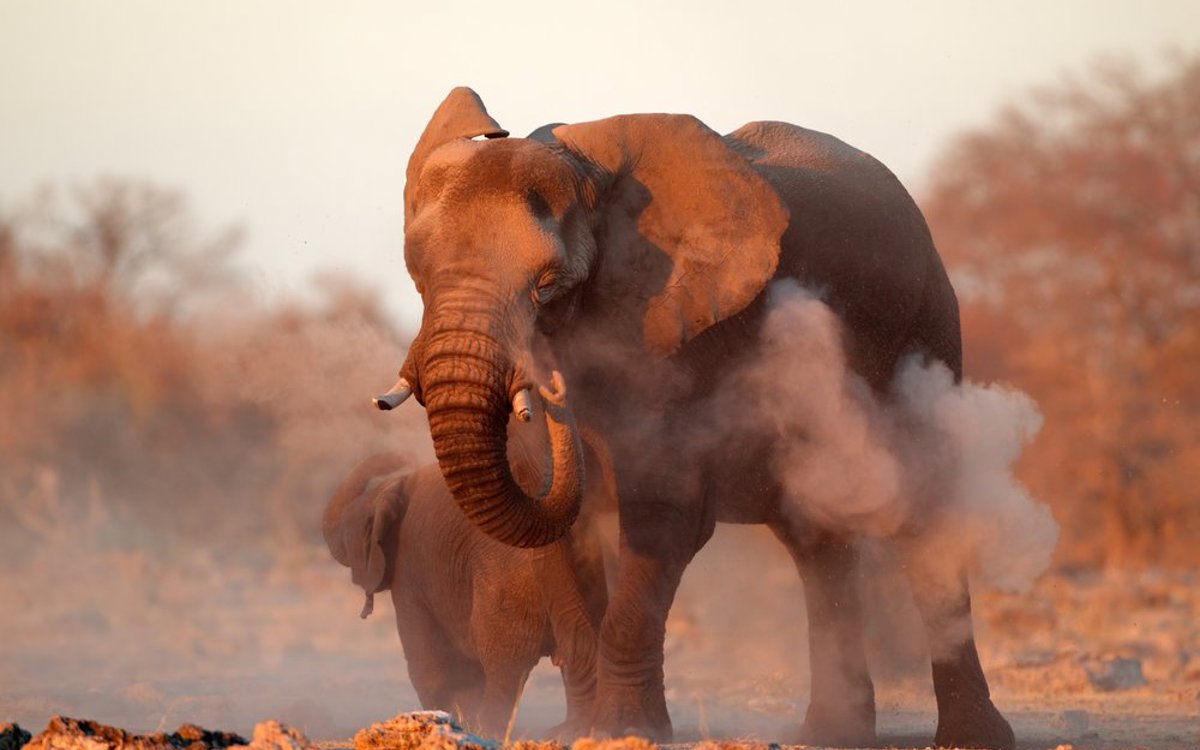What happens when our coexistence with wildlife becomes a battle of lives and livelihoods? By Selma Lendelvo and Wilhemina Nuule, University of Namibia

What happens when our coexistence with wildlife becomes a battle of lives and livelihoods?
By Selma Lendelvo and Wilhemina Nuule, University of Namibia
When we think of conflict, we think of societies divided, of embattled communities, and of tempers and tensions running high. We may not think immediately of wildlife as a potential foe. Yet across the world, humans and wildlife increasingly find themselves on opposing sides. As the borders between humans and wild spaces become blurred, and as the populations of both people and animals increase, the two can find themselves competing for space and resources. As habitats overlap, battle lines are drawn between humans and nature, with casualties on all sides when these lines are breached.
Conflict between humans and wildlife has become a major conservation challenge in many parts of the Commonwealth and shows the practical challenges that arise when humans and the natural world collide. The desire to protect certain vulnerable species of wildlife – sometimes by conservationists far removed from the realities of the situation – can seem to be pitted directly against the rights, wellbeing, and livelihoods of the communities living alongside these wild animals. Yet conflict can take a terrible toll on both sides: the economic and social wellbeing of local people is threatened, wildlife conservation initiatives suffer, and local support for conservation declines.
Like other countries, Namibia is trying to strike a balance between protecting its wildlife – lions, leopards, and elephants among them – while managing the threats posed to human lives and livelihoods by these and other wild animals. In our research at the University of Namibia, we aim to work across these divides. Universities can be particularly valuable places to resolve environmental conflicts as they are often perceived as neutral and objective. But to tackle these challenges effectively, it’s important to realise that the conflict between humans and wildlife is complex and multifaceted. As with many tensions in society, there is no straightforward solution. But our best hope of resolving the situation starts with understanding its impact.
Under attack
Our research has focused on the impact of human-wildlife conflict on the livelihoods of people in the Oshikoto region of northern Namibia – an area adjacent to the northern end of the Etosha National Park. The park, once proclaimed a game reserve by the German colonial administration of Namibia, is one of the oldest and largest of Namibia’s national parks and a major biodiversity hotspot.
Conflict occurs when the habitats of humans and wildlife collide – through wild animals venturing into villages or farms, for example, or by people and their livestock straying into the buffer zones around the park’s edge.
These interactions have a grave impact on communities: crops are damaged or destroyed, livestock and poultry – often vital to people’s livelihoods – are killed, and people themselves risk injury and death. For many, these are not isolated incidents: local newspapers reported that 186 livestock were killed by predators in the Oshikoto region in a single year. Farmers we interviewed expressed fears of losing entire herds should a leopard invade their village, as leopards tend to kill all animals in the kraal (enclosure).
The knock-on effects of these interactions are severe: a community’s basic food security is put at risk. Local workloads and costs soar as farmers are forced to rebuild their properties and infrastructure. Injuries turn into longer-term disabilities, affecting people’s capacity to work and provide for their families. The trauma of witnessing a friend or relative being attacked by a wild animal brings psychological distress and terror. Farmers experience despair as they realise an entire season’s work and investments have been in vain.
In other communities, the predators may seem more surprising, perhaps: elephants – often beloved by many who encounter them only on television screens – can be a menace to communities, destroying crops and livelihoods, damaging water points, and wrecking homes and fences. When communities try to guard their crops, elephants can become very aggressive, putting human lives in danger.
In all cases, the presence of a carnivore or elephant in an area spreads fear throughout the community. People become afraid to walk to work, get food, or send their children to school.
Here, as elsewhere around the world, the conflict between humans and wildlife is inextricably linked to issues of justice: local people may perceive that the needs of wildlife are given priority over their own, local institutions and community leaders may not be sufficiently empowered to deal with the conflict, and the authorities overseeing areas earmarked for conservation may fail to address the needs of local people or even work with them to understand the challenges they face.

Retaliation and decline
So, how is this problem tackled? The response, in some cases, is to kill the problematic animal – either in retaliation or to prevent further destruction. Although community farmers more often attempt to scare animals away, commercial farmers are more likely to kill, with more than 50% carrying guns. Governments may also decide to destroy an animal to prevent further damage: in 2020, four elephants were put down in the vicinity of the Etosha National Part to address the frequent destruction of crops.
Then there is the problem of poaching. This is sometimes undertaken in the belief that ‘we must benefit from wildlife as they destroy our produce and properties’. Animals and birds may be poached for ivory, skin or meat, for food or commercial gains. In the case of birds, poachers often kill large numbers at a time, usually in retaliation during the growing season when birds descend on young crops.
The killing and illegal hunting of wildlife can impact multiple generations of animal. A lion who has recently given birth, for example, is more likely to raid livestock to obtain the energy and nutrients to rear its young. This means that high numbers of adult females are destroyed on farmland during breeding seasons. Their offspring are often left to fend for themselves and the lion’s social structures within the park are disrupted.
All this creates a major challenge for conservation: wildlife populations decline, breeding is disrupted, and entire species may be driven to extinction.
Ecological knowledge
Notwithstanding these challenges, humans and wildlife in Africa have coexisted for millennia. This suggests that there are longstanding approaches and indigenous knowledge within many communities that may be very valuable in finding better solutions to wildlife management. Our research, for example, shows that farming communities often have a wealth of ecological knowledge and a deep understanding of the wildlife living close to them.
Farmers often have an in-depth knowledge of different species of predator – from their physical characteristics to the calls or vocal sounds they make. They draw on specialised knowledge of an animal’s spoor – unique, species-specific tracks or trails – to detect their presence. Often they’re able to pinpoint which predator has attacked their livestock by the different bite or claw marks they leave, their point of attack, strength of jaw, and the condition in which they leave their prey.
Local communities also have a deep understanding of the seasonal movement patterns, habits, and lifecycles of predators. They understand how attacks can increase or decline in particular seasons – for instance, when vegetation is less dense (and prey more evident) or when livestock must travel further afield in search of pastures to graze.
Our studies of mitigation strategies also point to a clear desire to scare wild animals away, rather than kill them. We found many farmers using noise as a deterrent – beating drums or singing loudly to indicate human presence. Some shoot into the air, with some elderly farmers using shotguns, omushasho, acquired during World War II. Making large fires around kraals is another strategy. Here, firewood from the onyege (sicklebush) is favoured because it burns strongly and brightly through the night and can even flame higher in the rain. It is, one cattle farmer told us, like oil.
This bank of specialised ecological knowledge – about wildlife behaviour, seasonal movements, and mitigation strategies – may hold important clues for improving wildlife management in Namibia. It’s a reminder that our greatest hope of resolving the rift between humans and wildlife – as well as building local support for conservation – is to draw on the knowledge, experiences, and expertise of those with most at stake.
Dr Selma Lendelvo is Head of the Life Sciences Division at the University of Namibia.
Wilhemina Nuule is a student at the University of Namibia.
Images (from top): Photograph of a leopard by SeymsBrugger at iStock. Elephant by EcoPrint at Shutterstock
